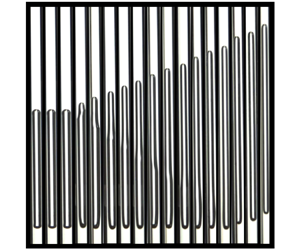Refine listing
Actions for selected content:
1417160 results in Open Access
Transmission of MRSA, ESBL E. coli, and C. difficile within a tertiary care hospital and across surrounding facilities in Japan: a molecular epidemiological study with the PCR-based Open-reading frame typing
-
- Journal:
- Infection Control & Hospital Epidemiology / Volume 46 / Issue 1 / January 2025
- Published online by Cambridge University Press:
- 11 November 2024, pp. 35-42
- Print publication:
- January 2025
-
- Article
-
- You have access
- Open access
- HTML
- Export citation
Managing epistaxis in hereditary haemorrhagic telangiectasia: a comprehensive narrative review of therapeutic horizons
-
- Journal:
- The Journal of Laryngology & Otology / Volume 139 / Issue 5 / May 2025
- Published online by Cambridge University Press:
- 11 November 2024, pp. 389-394
- Print publication:
- May 2025
-
- Article
- Export citation
Puttapaite, Pb2Mn2+2ZnCr3+4O2(AsO4)4(OH)6·12H2O, a new mineral from the Beltana deposit, Puttapa, Flinders Ranges, South Australia, Australia
-
- Journal:
- Mineralogical Magazine / Volume 89 / Issue 1 / February 2025
- Published online by Cambridge University Press:
- 11 November 2024, pp. 155-161
-
- Article
-
- You have access
- Open access
- HTML
- Export citation
THE PRODUCT OF A GENERALIZED QUATERNION GROUP AND A CYCLIC GROUP
- Part of
-
- Journal:
- Journal of the Australian Mathematical Society / Volume 118 / Issue 1 / February 2025
- Published online by Cambridge University Press:
- 11 November 2024, pp. 31-64
- Print publication:
- February 2025
-
- Article
- Export citation
Structural Responsibility
-
- Journal:
- American Political Science Review / Volume 119 / Issue 3 / August 2025
- Published online by Cambridge University Press:
- 11 November 2024, pp. 1333-1347
- Print publication:
- August 2025
-
- Article
-
- You have access
- Open access
- HTML
- Export citation
Design of a cost-effective intelligent surface structure for field reconfiguration of an antenna
-
- Journal:
- International Journal of Microwave and Wireless Technologies / Volume 16 / Issue 9 / November 2024
- Published online by Cambridge University Press:
- 11 November 2024, pp. 1481-1487
-
- Article
- Export citation
Associations of the serum n-6 PUFA concentrations with exercise-induced myocardial ischaemia in middle-aged and older men
-
- Journal:
- British Journal of Nutrition / Volume 132 / Issue 11 / 14 December 2024
- Published online by Cambridge University Press:
- 11 November 2024, pp. 1522-1529
- Print publication:
- 14 December 2024
-
- Article
-
- You have access
- Open access
- HTML
- Export citation
Probiotics’ supplementation alleviates disease severity and improves postural balance by repairing intestinal leak in patients suffering from osteoarthritis: a double-blinded clinical trial
-
- Journal:
- British Journal of Nutrition / Volume 132 / Issue 12 / 28 December 2024
- Published online by Cambridge University Press:
- 11 November 2024, pp. 1602-1610
- Print publication:
- 28 December 2024
-
- Article
- Export citation
Associations of linear growth with body composition of perinatally HIV-infected African adolescents
-
- Journal:
- British Journal of Nutrition / Volume 132 / Issue 12 / 28 December 2024
- Published online by Cambridge University Press:
- 11 November 2024, pp. 1593-1601
- Print publication:
- 28 December 2024
-
- Article
-
- You have access
- Open access
- HTML
- Export citation
Long-term effect of eating duration on all-cause mortality under different energy intake and physical activity levels
-
- Journal:
- British Journal of Nutrition / Volume 132 / Issue 11 / 14 December 2024
- Published online by Cambridge University Press:
- 11 November 2024, pp. 1513-1521
- Print publication:
- 14 December 2024
-
- Article
- Export citation
Associations of schizophrenia with arrhythmic disorders and electrocardiogram traits: genetic exploration of population samples
-
- Journal:
- The British Journal of Psychiatry / Volume 226 / Issue 3 / March 2025
- Published online by Cambridge University Press:
- 08 November 2024, pp. 153-161
- Print publication:
- March 2025
-
- Article
-
- You have access
- Open access
- HTML
- Export citation
Releasing long bubbles trapped in thin capillaries via tube centrifugation and inclination
-
- Journal:
- Journal of Fluid Mechanics / Volume 999 / 25 November 2024
- Published online by Cambridge University Press:
- 08 November 2024, A9
-
- Article
-
- You have access
- Open access
- HTML
- Export citation
Making plundered spaces sacred again: fragmentation, reorganisation and respect in reused Theban tombs
-
- Article
-
- You have access
- Open access
- HTML
- Export citation
Reactive oxygen species in age-related musculoskeletal decline: implications for nutritional intervention
- Part of
-
- Journal:
- Proceedings of the Nutrition Society , First View
- Published online by Cambridge University Press:
- 08 November 2024, pp. 1-9
-
- Article
-
- You have access
- Open access
- HTML
- Export citation
Second Hankel determinant of logarithmic coefficients of inverse strongly starlike functions
- Part of
-
- Journal:
- Proceedings of the Edinburgh Mathematical Society / Volume 67 / Issue 4 / November 2024
- Published online by Cambridge University Press:
- 08 November 2024, pp. 1196-1211
-
- Article
- Export citation
Future Generations Litigation and Transformative Changes in Environmental Governance
-
- Journal:
- Transnational Environmental Law / Volume 13 / Issue 3 / November 2024
- Published online by Cambridge University Press:
- 08 November 2024, pp. 464-474
-
- Article
-
- You have access
- HTML
- Export citation
Autonomy, Violence, and Consent in the Obstetric Field
-
- Article
-
- You have access
- Open access
- HTML
- Export citation
Urgent Warning: Evidence-Based Concerns Regarding Mass Gathering Events During Arbaeen in Hazardous Weather Conditions
-
- Journal:
- Disaster Medicine and Public Health Preparedness / Volume 18 / 2024
- Published online by Cambridge University Press:
- 08 November 2024, e258
-
- Article
- Export citation
Advocacy versus depart: How perceived organizational support influences employee well-being and shapes their intentions
-
- Journal:
- Journal of Management & Organization / Volume 31 / Issue 1 / January 2025
- Published online by Cambridge University Press:
- 08 November 2024, pp. 195-214
-
- Article
-
- You have access
- Open access
- HTML
- Export citation
Policy over Protest: Experimental Evidence on the Drivers of Support for Movement Parties
-
- Journal:
- Perspectives on Politics / Volume 23 / Issue 3 / September 2025
- Published online by Cambridge University Press:
- 08 November 2024, pp. 901-923
- Print publication:
- September 2025
-
- Article
-
- You have access
- Open access
- HTML
- Export citation





